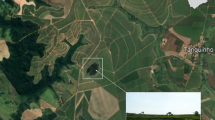Abstract
Groundwater can be used as an alternative renewable and clean energy source for space heating and cooling. Hydrogeologic conditions of Korea were evaluated for application of groundwater heat pumps (GWHPs), especially for open-loop system. Groundwater data obtained from the national groundwater monitoring stations (NGMSs) were used for the purpose. Temperatures of shallow and deep groundwaters are between 1.2–25.8°C and their annual variations are mostly within 10°C. Especially the small amplitude of variation for deep groundwaters can facilitate design and maintenance of groundwater heat pumps. Groundwater levels for shallow and deep wells are located at average 4.79–6.07 m below ground surface. The shallow water levels are most promising for groundwater heat pumps, which reduces pumping costs. A large number of monitoring wells showed a good well yield exceeding a requirement for 3 RT heat pumps for small residential purposes but a limited application is expected for large commercial uses with the single well. Some proportions of shallow and deep groundwaters exhibited scaling and corrosion potentials in respect to hardness, pH, electrical conductivity, total dissolved solids, bicarbonate and chloride. Each relevant parameter was separately evaluated in this study but the parameters are closely correlated. Thus for more detailed and quantitative examination of water quality conditions for GWHPs, integrated and extensive chemical analysis of groundwaters are essentially required.
Similar content being viewed by others
References
AHP (Aquatherm Heat Pumps), 2001, Installation Manual: Swimming Pool and Spa Heat Pumps. AHP, Florida, 22 p.
Chiasson, A.D., Rees, S.J. and Spitler, J.D., 2000, A preliminary assessment of the effects of groundwater flow on closed-loop ground-source heat pump systems. ASHRAE Transactions, 106, 380–393.
DOE (Department of Energy), 1999, Renewable Energy Annual 1998: Issues and Trends. Office of Coal, Nuclear, Electric and Alternate Fuels, DOE/EIA (Energy Information Administration), Washington, DC, 1731 p.
Hahn, J.S., Hahn, G.S., Hahn, H.S. and Hahn, C., 2004, Geothermal Heat Pump, Heating and Cooling Systems. Hanrimwor, Seoul, Korea, 566 p. (in Korean)
Hem, J.D., 1985, Study and Interpretation of the Chemical Characteristics of Natural Water. Water-Supply Paper, 2254, U.S. Geological Survey, Washington, 263 p.
Heng, X.S. and Rybach, L., 2005, Development and application of a new, powerful groundwater heat pump system for space heating and cooling. World Geothermal Congress 2005, International Geothermal Association, Antalya, Turkey, p. 1–5.
Houghton, J.T., Meira Filho, L.G., Callander, B.A., Harris, N., Kattenberg, A. and Maskell, K., 1996, Climate Change 1995: Contribution of WGI to the Second Assessment Report of the Intergovernmental Panel on Climate Change. Cambridge University Press, Cambridge, 572 p.
Kim, J.H., Yum, B.W., Kim, R.H., Koh, D.C., Cheong, T.J., Lee, J.H. and Chang, H.W., 2003, Applications of cluster analysis for the hydrogeochemical factors of saline groundwater in Kimje, Korea. Geosciences Journal, 7, 313–322.
Kim, S.Y. and Min, K.D., 2001, Effects of terrain and land-use on local circulation and temperature change at Taegu region in summer. Journal of the Korean Meteorological Society, 37, 105–121 (in Korean with English abstract)
Knipe, E.C. and Rafferty, K.D., 1985, Corrosion in low-temperature geothermal applications. ASHRAE Transactions, 91, 81–91.
Koo, M.H., Kim, Y., Suh, M. and Suh, M.S., 2003, Estimating thermal diffusivity of soils in Korea using temperature time series data. Journal of the Geological Society of Korea, 39, 301–317. (in Korean with English abstract)
Lee, C.K. and Han, U., 2001, Estimation of borehole temperature disturbed by drilling. Geosciences Journal, 5, 313–318.
Lee, C.K., Han, U. and Lee, S.W., 2000, Subsurface temperature perturbation due to surface temperature fluctuation at a site in the northeastern Seoul area. Journal of the Geological Society of Korea, 36, 325–334. (in Korean with English abstract)
Lee, J.Y. and Hahn, J.S., 2005, Characterization of groundwater temperature obtained from the Korean national groundwater monitoring stations: implications for heat pumps. Journal of Hydrology (revised).
Lee, J.Y., Yi, M.J., Yoo, Y.K., Ahn, K.H., Kim, G.B. and Won, J.H., 2005, A review of national groundwater monitoring network (NGMN) in Korea, Hydrological Processes (in press).
Lund, J.W., 1996, Direct heat utilization of geothermal resources. GHC Bulletin, 17, 14–28.
Lund, J.W., Culver, G and Lienau, P.J., 2003, Groundwater characteristics and corrosion problems associated with the use of geothermal water in Klamath Falls, Oregon, GHC Papers, Oregon Institute of Technology, 16 p.
Min, B.O., 1979, A study on the climatic type in Korea by the characteristics of temperature distribution. Journal of Korean Society of Oceanography, 3, 29–46. (in Korean with English abstract)
MOCT (Ministry of Construction and Transportation) and KOWACO (Korea Water Resources Corporation), 2004, An Annual Report on Groundwater Monitoring 42000-58460-56-0013, MOCT and KOWACO, Daejon, Korea, 867 p. (in Korean)
PDEP (Pennsylvania Department of Environmental Protection), 1996, Ground Source Heat Pump Manual, Commonwealth of Pennsylvania, Harrisburg, PA, 52 p.
Rafferty, K.D., 1998, Well-pumping issues in commercial groundwater heat pump systems. ASHRAE Transactions, 104, 927–931.
Rafferty, K.D., 1999, Scaling in Geothermal Heat Pump Systems. Geo-Heat Center, Klamath Falls, OR, 63 p.
Rafferty, K.D., 2000, Scaling in geothermal heat pump systems. GHC Bulletin, 21, 11–15.
Rafferty, K.D., 2001, Design aspects of commercial open-loop heat pump systems. GHC Bulletin, 22, 16–24.
USEPA (United States Environmental Protection Agency), 1993, Space Conditioning: The Next Frontier-The Potential of Advanced Residential Space Heating Technologies for Reduction Pollution and Saving Customers Money. USEPA, Washington, 103 p.
Author information
Authors and Affiliations
Corresponding author
Rights and permissions
About this article
Cite this article
Lee, JY., Won, JH. & Hahn, JS. Evaluation of hydrogeologic conditions for groundwater heat pumps: analysis with data from national groundwater monitoring stations. Geosci J 10, 91–99 (2006). https://doi.org/10.1007/BF02910336
Received:
Accepted:
Issue Date:
DOI: https://doi.org/10.1007/BF02910336




